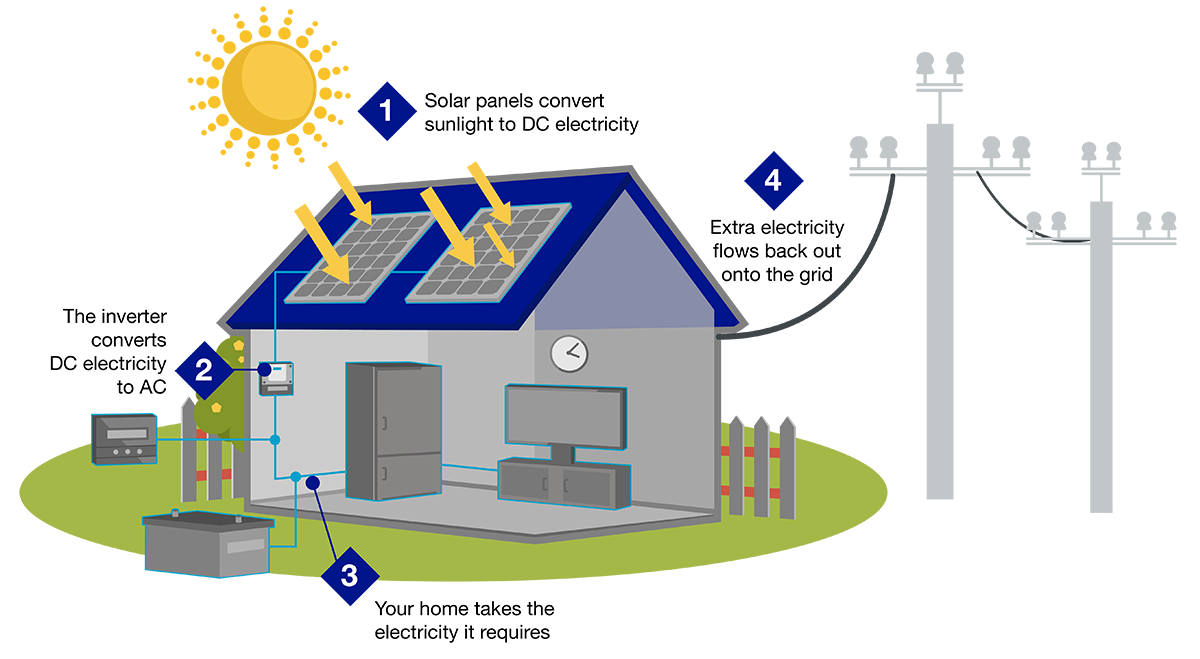Understand the Basics
Solar power is increasingly part of the mix as we work towards a clean, fair and affordable energy future. Put at its very simplest, solar generation converts energy from the sun into power via solar panels.
These panels can range in size from those on residential rooftops to huge ‘solar farms’ stretching over many acres of land. Solar power is a renewable and infinite energy source that creates no harmful greenhouse gas emissions.

![]()
Solar panels are usually made from silicon, or another semiconductor material installed in a metal panel frame with a glass casing. When this material is exposed to photons (very small packets of energy) of sunlight it releases electrons and produces an electric charge. This is called the photovoltaic effect.
![]()
This photovoltaic charge creates an electric current (specifically, direct current or DC), which is captured by the wiring in solar panels installed on your house.
This DC electricity is then converted to alternating current (AC) by an inverter. AC is the type of electrical current used in homes and most appliances.
![]()
The AC electricity can be used to power your home,
![]()
Or can be fed into the grid for compensation through net metering.
Frequently Asked Questions
Yes, absolutely. Solar power only requires some level of daylight in order to harness the sun’s energy. That said, the rate at which solar panels generate electricity does vary depending on the amount of direct sunlight and the quality, size, number and location of panels in use.
Yes. While your balance may be $0, depending on your situation, you will still receive a bill each month.
With an energy storage system (ESS), you can store extra solar electricity at home. ESS can be a source of backup power in the event of a grid outage. Adding a battery to your solar panel system will cost more upfront, but you may be eligible for multiple storage incentives and programs.
Solar generating systems that can provide backup power during a power outage require additional equipment, including a battery, which will increase the overall cost of a project installation.
